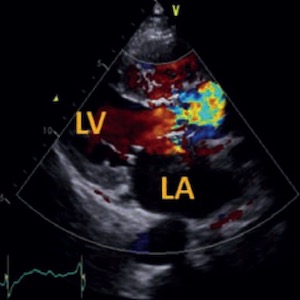Three-dimensional printing in integrated multi-modality imaging approach for management of prosthetic valves infective endocarditis

Video 1: 130
All claims expressed in this article are solely those of the authors and do not necessarily represent those of their affiliated organizations, or those of the publisher, the editors and the reviewers. Any product that may be evaluated in this article or claim that may be made by its manufacturer is not guaranteed or endorsed by the publisher.
Authors
After heart failure, infectious endocarditis is the second leading cause of death in patients with prosthetic valves. Aortic pseudoaneurysms are a serious complication of infective endocarditis in mechanical or bioprosthetic aortic prostheses. Diagnostic and management challenges are posed by aortic pseudoaneurysms. In these cases, a multi-modality imaging approach with a heart team is recommended. We described two cases of aortic pseudoaneurysms that developed as a result of infective endocarditis. The first case involved a TAVI patient who developed infective endocarditis as a result of diabetic foot complications. Because traditional echocardiography and computed tomography failed to show the anatomy of the lesion, we used 3D printing to show the anatomy, extension of the pseudoaneurysm, and proximity to the right coronary artery. The second case involved a patient who underwent Bentall's surgery with an aortic root and mechanical aortic valve and later developed infective endocarditis complicated by pseudoaneurysms. In this case, 3D printing was used for preoperative surgical planning.
How to Cite

This work is licensed under a Creative Commons Attribution-NonCommercial 4.0 International License.
PAGEPress has chosen to apply the Creative Commons Attribution NonCommercial 4.0 International License (CC BY-NC 4.0) to all manuscripts to be published.

 https://doi.org/10.4081/monaldi.2022.2479
https://doi.org/10.4081/monaldi.2022.2479




